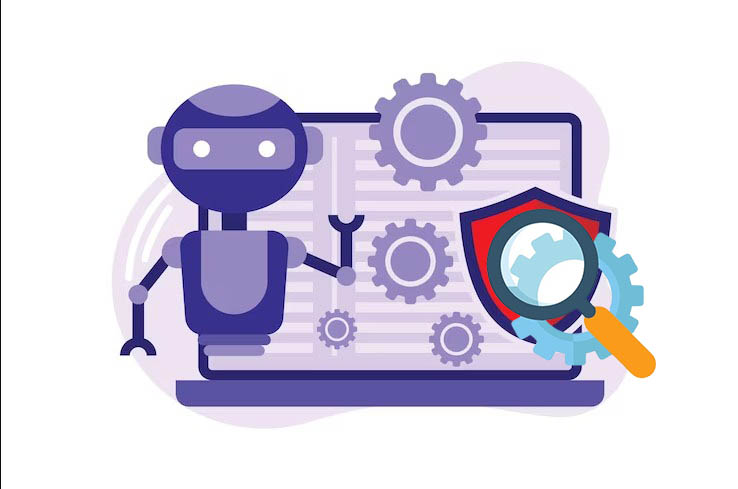The FinTech industry has experienced significant growth and now offers a variety of financial solutions. Thorough software testing is essential as FinTech increasingly relies on humans. Preserving data integrity, guaranteeing compliance, maximizing performance, and improving the user experience within the FinTech sector, this assures success, dependability, and security.
We are becoming increasingly interested in the underlying software that supports these new digital forms since every aspect of our lives is becoming digital. Having reliable, error-free software is essential. Strict testing, ongoing development, and professional supervision are essential to trustworthy digital governance. Testing software can assist with this. You may create fantastic software and get assistance with software testing from a reputed Software Testing Company India. In this extensive post, we will cover the following subjects related to software testing.
What is Software Testing?
Software testing is the process of evaluating a software item to detect differences between its present and desired conditions, that is, defects, errors, or bugs, and evaluating its characteristics.
Software testing can help confirm that the finished solution meets the necessary requirements. The goal of software testing is to:
- to evaluate how well something is performing.
- to detect mistakes and defects.
- to identify differences between expected and actual conditions.
Furthermore, software testing provides an impartial and objective evaluation of the program, assisting in the comprehension of its advantages and disadvantages.
Why is Fintech Software Testing Important?
Ensuring that the program operates at its best is crucial. It is usually advisable to test the software before using it to avoid several losses. Because software testing offers several advantages, it is important to do it before delivering the final product to the client.
Role of Software Testing in Financial Regulations
The cost of developing fintech software may be lowered in several ways. One strategy is to properly test the program. Before installation, pre-testing software can lead to considerable cost reductions. If you utilize faulty software, you will lose a lot of money in addition to users and clients. Testing also ensures that your application won’t need ongoing maintenance, which may save costs.
Superior Fintech Software testing makes sure that your application runs well by eliminating bugs and problems. You may thus guarantee that your consumers will receive top-notch software. Offering top-notch software is an additional crucial component in developing a favorable business perception. Better software increases revenue by attracting a larger user base.
Interface User
User experience is critical to the success of software launches. It must be simple and easy to use. For a satisfying user experience, comprehensive testing is necessary to guarantee simple, easy usage.
A faultless user experience encourages recommendations and expands your business.
Makes Money
Fintech software testing is significantly responsible for profitability. Ensuring superior quality boosts return on investment. Extensive software testing results in high-quality, productive software that enhances customer satisfaction, word-of-mouth marketing, and user experience. It will help with both your attempts to attract new customers and keep existing ones. Consequently, it makes money. Additionally, since software testing enables you to remove as many errors as possible at the early stages of development, long-term troubleshooting costs are reduced.
Enterprise Efficiency
Business optimization implies satisfied clients, client retention, lower maintenance costs, more revenues, better quality, and a stronger brand image. Everything depends on the quality of the software you offer your clients, and that quality can only be ensured by thorough and continuous software testing. Malicious software can also lead to a breakdown in internal communication within your company, which can result in unnecessary problems and inefficiencies. Software testing can help avoid the negative effects of flawed software.
What Types of Software Testing Are There?
Software testing comes in two flavors:
(A) Manual or automated testing
Through Manual Inspection
The technique of assessing software on its own with human intervention is known as manual testing. The criteria are compared with the current situation. During testing times, manual testing might entail thorough, sequential test scenarios.
The following are some advantages of manual testing:
Cost-Effective Manual Testing: You may save money by testing software by hand as opposed to using automated techniques. There is nothing like human sight.
The human eye frequently picks up on details that an automated technology overlooks. If something seems “off,” the tester can quickly correct it.
Modification of User Experience: You cannot expect the best possible user experience from an automated tool. Certain things are simpler for the human eye to detect, including visual or design problems.
(B) Tests for Automation
Automated technologies are employed in automated testing. Efficiency, repeatability, coverage, and quicker response are among the main advantages of software testing procedures.
Tests can be scheduled to be run at specific times.
With automated testing, software testing may be planned for any time and from any location.
- The fact that you are not physically there for the assessment allows you this freedom. Automated tools can assist you.
- Regression testing is easy.
Software functionality is ensured via a regression testing strategy. It’s laborious yet necessary. The procedure is made easier by automation, which enables planned and automated testing.
It allows you to reuse your test scripts.
Saves time
Because automation testing removes the need for human monitoring, it expedites the process. It boosts productivity and saves you time from creating test scripts and conducting repetitive testing, allowing you to concentrate on other product aspects.
What are software testing guiding principles?
- Seven ideas form the basis of software testing.
- Testing identifies the presence of defects.
- Overall, testing is not practical.
- Early Testing: Testing needs to start as soon as possible to find detects first.
- Clustering of Defects: Most errors are frequently discovered in small modules.
- Pesticide Paradox: No new flaws will show up when the same tests are repeated. The pesticide issue may be avoided by routinely reviewing and updating test cases.
- The circumstances determine the testing.
- Defects cannot be found or fixed if the system is not working.
What are the Software Testing Techniques?
Software may be tested in two different ways:
- Dynamic Inspection and
- Static Testing
Static Testing
Static testing is the process of checking software for issues without running the code. Early in the software development process is usually when rapid debugging takes place. Testing is carried out both manually and automatically.
A list of some of the things that are assessed during static testing is provided below:
- Conditions of Business:
- Keep track of the unit test cases.
- functional requirements
- Use cases
- Test data An illustration of a prototype’s specifications The Traceability Matrix Record Keep track of automation scripts and user manuals.
Here are a few advantages of static testing:
- It makes finding code bugs easier.
- This approach makes it simple and quick to identify and correct errors.
- Using static testing, one may determine mistakes from the start.
Dynamic Examination
Using dynamic variables, dynamic testing assesses functionality, memory use, and overall performance of code execution. Examining a social network login mechanism, for instance.
For example, let’s say you are evaluating a social network login mechanism.
You can access the “Username” and “Password” fields.
You can only input alphabets in the “Password” area. If you type “LH123,” the system will display an error notice. However, if you type “Leeway,” the system will accept it.
This illustrates how the input determines how the code behaves.
Making sure the application functions properly both during and after installation is the aim of dynamic testing.
The Importance of QA Testing in the Fintechs is that it makes application analysis easier.
- It highlights errors that static testing was unable to capture.
- It assures you of the program’s quality by eliminating the majority of flaws.
- It validates the findings of the static testing.
- It works with every application.
- One of the disadvantages of dynamic testing is the time investment.
- It is really expensive.
Which Qualities Must Your Software Testing Team Have?
The qualities that your software testing team should have are listed below:
- Adaptivity in Context: The testing team must be adaptable to modify different software testing approaches to meet the particular requirements of the project. This type of flexibility contributes to the increased effectiveness of the software.
- Programming proficiency: Regardless of the testing technique used, the testing team needs a specific level of programming knowledge to evaluate and repair issues more quickly.
- Understanding of Testing Procedures: Numerous Testing teams are not aware of the variety of available testing techniques. Things shouldn’t be this way. Make sure the testing team you choose is well-versed in all the options available.
- Business Requirements: The testing team has to be aware of the program’s objectives. Identification and resolution of issues are improved when customer demands are understood.
- Clear communication is essential for fostering understanding between the testing team and its clients. The team has to be exceptionally skilled at both written and vocal communication to minimize the chance of requirements ambiguity.
- Ongoing Education: As the globe becomes more digitally connected, new techniques and innovations appear regularly. The testing team must thus always be eager to learn and stay up to date on the newest techniques to increase the quality of their job.
- The team has to be very good at testing and have excellent logical and analytical abilities to carry out software testing efficiently.
In summary
Software testing is a complex topic that a company providing software development services must comprehend to guarantee the dependability and efficiency of programs. As this extensive book on The Role of Software Testing in FinTech comes to an end, it is clear that careful testing procedures are required to deliver software that is up to date. This is especially crucial for industries with tight rules, such as fintech software development firms, where precision and security are a must. By including a methodical and thorough testing strategy, these companies may detect and rectify any flaws early in the software development life cycle and build a foundation of confidence with end users. Fintech innovation and symbiotic relationship and as technology develops, software testing becomes more and more obvious, highlighting the need for a flexible and smart approach to quality assurance in the dynamic field of financial technology. Software is perfect; continuous improvement is essential. Software testing guarantees products that are capable, effective, and generally free of bugs. Select a group that employs the newest models, instruments, and methods to provide excellent outcomes.



